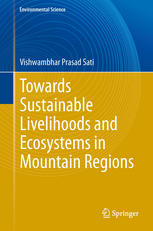

Most ebook files are in PDF format, so you can easily read them using various software such as Foxit Reader or directly on the Google Chrome browser.
Some ebook files are released by publishers in other formats such as .awz, .mobi, .epub, .fb2, etc. You may need to install specific software to read these formats on mobile/PC, such as Calibre.
Please read the tutorial at this link: https://ebookbell.com/faq
We offer FREE conversion to the popular formats you request; however, this may take some time. Therefore, right after payment, please email us, and we will try to provide the service as quickly as possible.
For some exceptional file formats or broken links (if any), please refrain from opening any disputes. Instead, email us first, and we will try to assist within a maximum of 6 hours.
EbookBell Team

4.0
76 reviewsSustainable livelihoods and ecosystems are far-reaching and burning issues in the wake of high growth of population, low production and per ha yield of crops and depletion of biodiversity resources. Mountainous regions of the world are facing the menace of poverty, food insecurity and malnutrition. Further, tremendous growth in population and slow pace of development have together forced most of the population to live below poverty line. Traditionally depending upon cultivating subsistence crops for food requirement, the people living in mountainous region are unable to produce sufficient food grains to run their livelihood smoothly. The Himalayas is one of the world’s biodiversity hotspots and has an abundance of natural resources: land, water and forest – life sustaining factors. The geo-environmental conditions – climate and landscape further enhance the possibility of sustainable livelihoods through eco-tourism, harnessing water resources and utilizing forests and their products sustainably. Diversifying agricultural practices through cultivating cash and cereal crops and enhancing livelihood options through extensive use of timber and non-timber based forestry products can help to eradicate poverty and provide food security. This book consists of an introduction and nine chapters, covering geo-environmental setting, socio-economy and population profile, sustainable livelihoods: diversification and enhancement, livelihood analysis, development of tourism and hydroelectricity, case studies, mountain ecosystems, sustainable mountain development and also presents a conclusion.